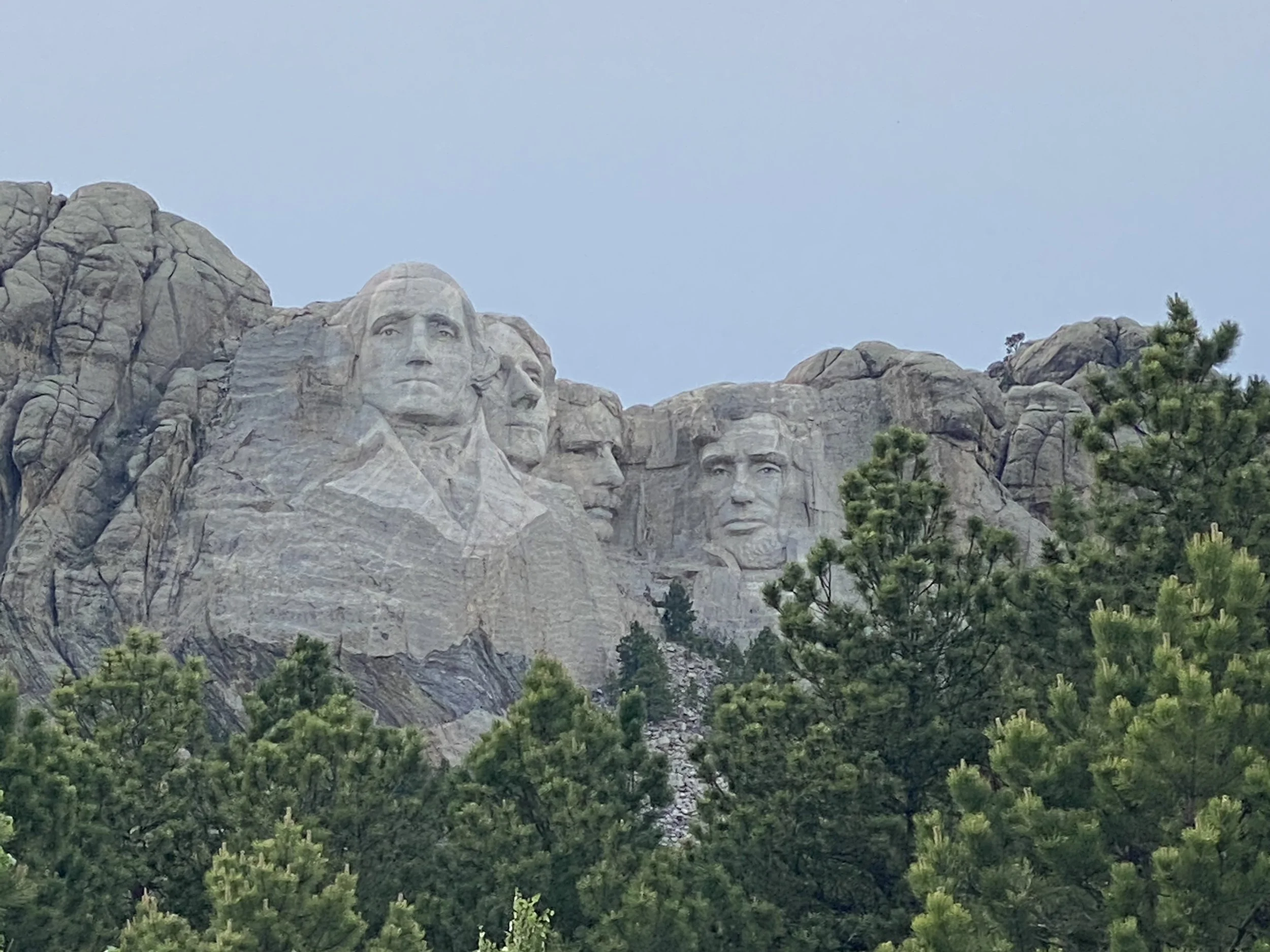Mount Rushmore’s 1st Dedication 100 Years Later
The Mount Rushmore National Memorial in Keystone, South Dakota. Photo taken by Darren Thompson on June 13, 2020.
By Darren Thompson
Black Hills—100 years ago, Mount Rushmore would have its first dedication, and one of three dedications in its first five years of construction. The Rapid City Journal reported that three thousand people joined in the dedication on October 1, 1925, and it was also reported that same evening that project’s creative director—Gutzon Borglum—had no funding to begin construction. Since it inception, perhaps the nation’s most well known monument has had problems and most of those stories haven’t involved Indigenous people.
“Over the last 100 years, there has been little history at Mount Rushmore that reflects the Lakota, Dakota, and Nakota people of the Black Hills,” said Darrell Red Cloud, a fifth-generation descendant of Oglala Lakota leader Chief Red Cloud who now teaches Lakota studies at Oglala Lakota College in Kyle, South Dakota on the Pine Ridge Reservation. “They still hold back on sharing the true history of the mountain and what it means for our people, and continue to cover up the wrongs committed against our people, like the taking of the Black Hills and the Wounded Knee Massacre.”
Red Cloud, and others, have taken their own initiatives to teach the history of the Black Hills, and their meaning to the Oceti Sakowin. Today, Red Cloud leads a bi-weekly walk at the Crazy Horse Memorial, where he teaches visitors about Lakota culture and history. Oceti Sakowin Tribes began purchasing land in the Black Hills, especially near Pe’Sla, where tribes steward the land and their relationship with it.
“Since Mt. Rushmore was dedicated 100 years ago, it has become an international symbol of white supremacy and injustice,” said Nick Tilsen, Oglala Lakota founded and CEO of Rapid City-based NDN Collective, in a statement to LRI Native News. “The Treaty of 1868, the U.S. Constitution and Human Rights were violated in the process of building this shrine of hypocrisy. When this country lies to its self and builds shrines of racism it erodes democracy and perpetuates violence.”
After the Battle of the Little Bighorn, Congress voted to take the Black Hills in 1877 and never compensated the Great Sioux Nation. The issue would eventually make it to the Supreme Court of the United States (SCOTUS) in 1980 and voted in favor of the Oceti Sakowin, that the land was illegally taken and the people were never fairly compensated. The landmark decision sparked hope and purpose into Indigenous people reclaiming their stewardship to lands they once occupied, and many tribes have reclaimed, either through purchase or legal efforts, their land back.
In 2012, nine Tribal Nations raised money to buy land located in the central. Black Hills that is widely known as Pe’Sla, the heart of everything, for $9 million. Additional support came from all over the world including Russia, France, Egypt, Germany, Denmark and Japan. The land is now in the hands of the Great Sioux Nation, and is a sacred site to the Oceti Sakowin.
“What the United States government did to HěSapa is an abomination, and a direct middle finger to the Lakota people for the resisting as long as they did,” said Nataanii Means in an interview with LRI Native News. Means was arrested with 20 others during a protest outside of the Mount Rushmore National Memorial when President Trump visited the Black Hills on July 3, 2020.
Means’ father, the late Russell Means, urinated on George Washington’s head in an act of protest during an occupation led by the American Indian Movement in 1970. Time Magazine reported that he did it to symbolize “how most Indians feel about the faces chiseled out of our holy land.”
“Today, we continue to nurture our relationship with the Black Hills with the return of the Wind Cave Sundance, Welcome of the Thunder-beings in the spring time, and continuing our coming of age ceremonies for the next generations,” Means added. “The Black Hills will forever not be for sale. ȞéSapa kiŋ naúŋkičižiŋpi—We defend/protect the Black Hills.”
After the 1980 SCOTUS decision, the people denied the award, valued at $106 million, and said that the Black Hills are sacred and not for sale. Today, the amount sits in an account managed by the Dept. of Interior and is values at over $2 billion.
As the U.S. approaches its semi-quincentennial, 250th anniversary in 2026, the federal government appropriated $40 million via the Big Beautiful Bill Act to erect 250 statues of “great figures of American history” for the proposed National Garden of American Heroes. The National Garden of American Heroes is set to open in July 2026 in celebration of the 250th Anniversary of the Declaration of Independence and construction was slated to begin October 1 according to the National Endowment for the Humanities. The location of the National Garden of American Heroes has not been revealed, but there is an active effort from South Dakota’s politicians, to place the garden in the Black Hills.
###
Darren Thompson is the Managing Editor of Last Real Indians Native News Desk and the Director of Media Relations for the Sacred Defense Fund, an Indigenous-led nonprofit organization based in Santa Fe, New Mexico. He’s an award winning multimedia journalist enrolled at Lac du Flambeau Band of Lake Superior Chippewa, where he grew up. He can be reached at darren@sacreddefense.org.

